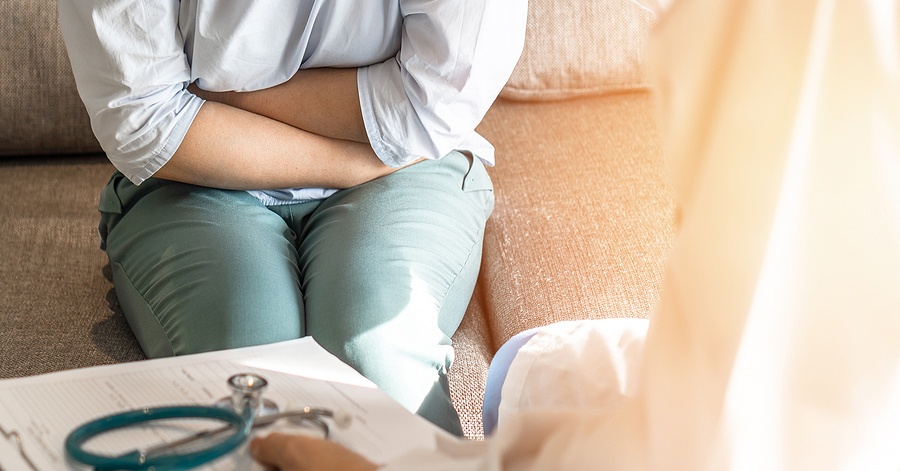A Complete Guide to the Sigmoidoscopy Procedure

You've probably heard a lot about colonoscopies, but sigmoidoscopies don't seem to receive as much attention. As a result, you might be surprised if your doctor suggests this procedure.
Once you start to explore the sigmoidoscopy procedure, though, you'll learn that it's a relatively simple process. Knowing what to expect can build your confidence as you prepare for your upcoming appointment.
Reasons for a Sigmoidoscopy
During a sigmoidoscopy procedure, your doctor will be able to see the inside of your anus, your rectum and part of your colon.
If you have concerns about your colorectal system, a sigmoidoscopy may be used for diagnostic purposes. This procedure is often done to explore the cause of:
At other times, a sigmoidoscopy is used as a preventative procedure. By scoping the lower colon, doctors can look for polyps and other concerning symptoms that might be indicative of colon cancer. You may need this examination performed every five years even if you're not experiencing symptoms.
Also, if you've been diagnosed with a colon condition in the past, a sigmoidoscopy will allow the doctor to see how the disease is progressing.
Types of Sigmoidoscopies
When you hear the term "sigmoidoscopy," the speaker could be referring to rigid sigmoidoscopy or flexible sigmoidoscopy. Both procedures serve a similar function, but they involve different instruments.
For a rigid sigmoidoscopy, the doctor inserts a plastic or metal tube into your rectum. The length of this tube can vary. Depending on its size, the instrument may be called a rectoscope, a proctoscope or a sigmoidoscope, but these terms all refer to similar tools. Adler MicroMed offers disposable plastic sigmoidoscopy instruments in three different sizes.
Learn more about rigid sigmoidoscopy in the following video:
Flexible sigmoidoscopy uses a bendable tube that is equipped with a light and a camera on the end. It sends a video feed of your intestinal walls to a screen.
Watch this video for more information on flexible sigmoidoscopy:
How to Prepare for a Sigmoidoscopy
Sometimes, doctors ask patients to prepare their bowels before having a sigmoidoscopy performed. Empty colons allow for clearer views of the intestinal walls.
You may be told not to eat any solid food the day before your test. A clear liquid diet is best. The day of the procedure, you may need to stop liquids as well.
Taking a laxative or using an enema may be another important step. This will clean out your bowels. You'll need to stay close to a restroom during this time.
Your doctor will have specific instructions for you about getting ready for your sigmoidoscopy.
During the Procedure
The exact steps of your procedure will depend on whether you're having a rigid or flexibly sigmoidoscopy and what the purpose of the examination is, but the following guide provides a general overview of the process.
When you show up for your sigmoidoscopy, you may undergo sedation. This isn't always necessary, but some patients prefer not to be aware of what is going on.
Then, you'll lie on your left side. Bringing your knees up to your chest will allow the medical team to easily navigate through your rectum and sigmoid colon.
The doctor will apply lubricant before gently inserting the probe into your anus. Blowing air into the rectum can help expand the colon walls to provide a better view and easier passage.
Then, the probe will be guided through the bends and folds of your system. An eyepiece on a rigid sigmoidoscope or the camera on a flexible one can help the doctor visualize the passage.
If you're awake during the procedure, you may feel some discomfort or cramping, but it shouldn't be acutely painful.
While moving the scope through the colon, the doctor will look for any abnormalities along the way. It may be possible to address these during the procedure, or a follow-up treatment may be required.
Once the sigmoidoscope has been inserted as far as necessary, the doctor will carefully withdraw it, once again paying attention to the bends of the colon and rectum.
If you have been sedated, you will need to recover for a while before going home. For procedures without sedation, you'll be able to leave right after your sigmoidoscopy is over.
Diagnoses and Treatments
During a sigmoidoscopy, the doctor may be able to identify colorectal conditions that are causing your symptoms. They may include:
Some problems may require the doctor to perform a follow-up procedure. For example, hemorrhoids can be treated with rubber band ligation.
The doctor may also spot inflammation. That can be a sign of colitis or another bowel disease.
Polyps and other growths can sometimes be removed during the sigmoidoscopy. The doctor may also be able to remove a tissue sample for a biopsy.
If the doctor finds polyps or other cancer-related abnormalities, you'll be advised to have a full colonoscopy. A sigmoidoscopy shows only the last part of the colon, but the scope for a colonoscopy can travel the full length of the large intestine.
A rigid or flexible sigmoidoscopy procedure is useful for diagnosing colorectal conditions and monitoring your health. Your doctor may want you to have this procedure done every five years — or more often if you're experiencing troubling symptoms.
To find a colorectal specialist who uses Adler MicroMed sigmoidoscopy kits, use the online Provider Finder.
As with all medical issues, your physician is the ultimate source as to what procedure best fits your needs. Discuss all options and get a second opinion if you have any doubts. These articles are intended to be a source of general information only.
